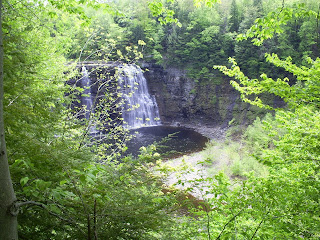
Water n Rocks will be on hiatus for about three weeks as the authors will be taking a trip to the Southern Rocky Mountains.
Here's the itinerary:
May
25 - Depart Oneonta at 7 AM, Camping in Ohio
26 - Travel Day, camping in Kansas (or Nebraska)
27 - Arrive and Camp in Colorado Springs, CO at Chatfield State Park
28 - Pike's Peak, Garden of the Gods, Chatfield St. Pk.
29 - Petrified Forest, Morefield, Arizona
30 - Mesa Verde Nat'l Park, Balcony House, Morefield Arizona
31 - Silverton, CO, Camp at Morefield, Arizona
June
1 - Grand Canyon - Mather Campground
2 - Grand Canyon, West Rim - Mather Campground
3 - Grand Canyon, Cedar Ridge - Mather Campground
4 - Grand Canyon, East Rim - Mather Campground
5 - Travel Day, Zion National Park
6 - Hiking in Zion
7 - Arches National Park, Moab, Utah
8 - Arches National Park, Moab, Utah
9 - Mt. Evans, CO, Chatfield St. Pk.
10 - Rocky Mountain Nat'l Park, CO, Chatfield St. Pk.
11 - Arsenal Wilfdlife Refuge, Dinosaur Ridge, Red Rocks, Chatfiels St. Pk.
12 - Ogallala Aquifer, Nebraska
13 - Travel, Iowa
14 - Travel, Ohio
15 - Return to Oneonta, NY




















_L+R(2)_bw.jpg)



